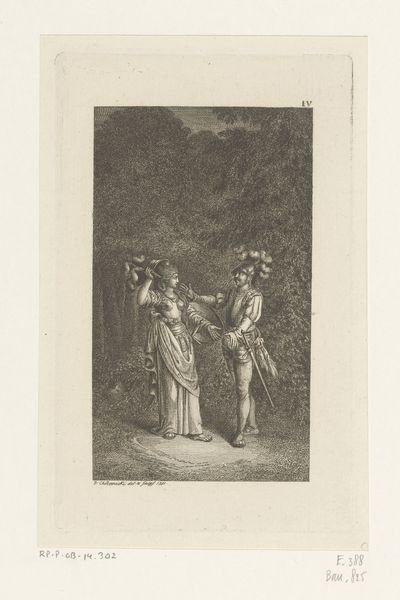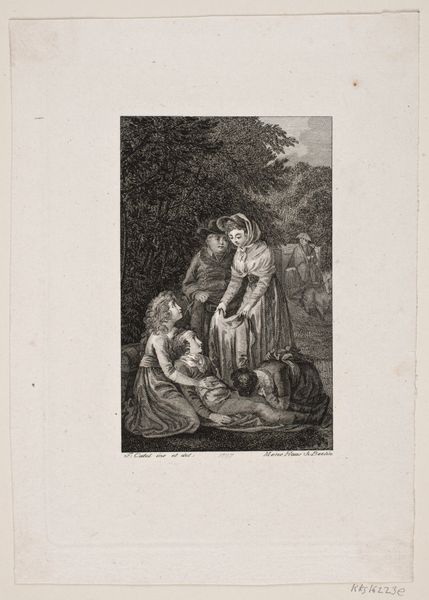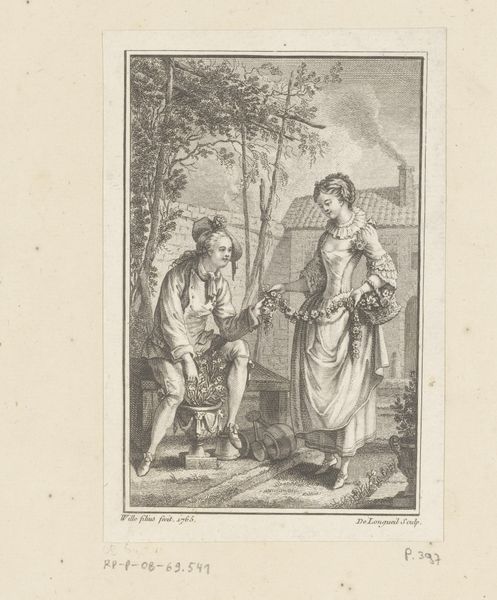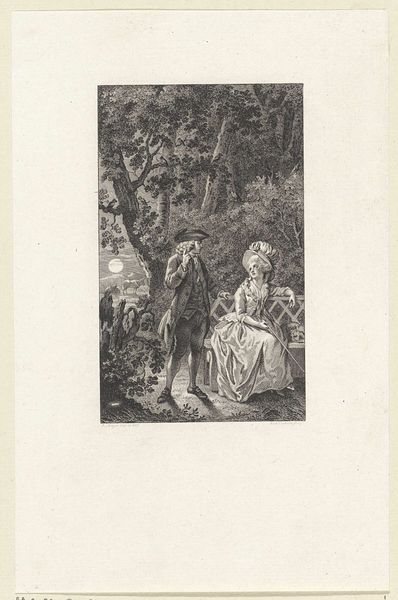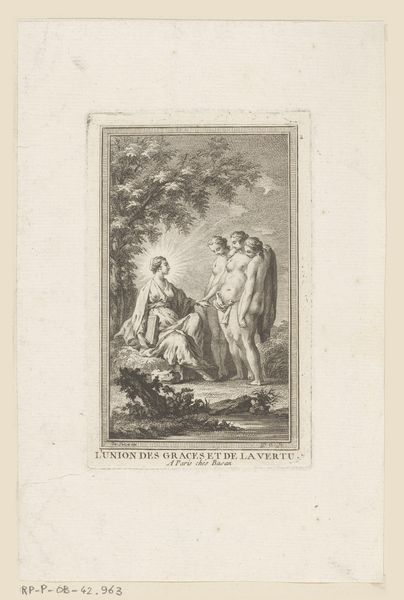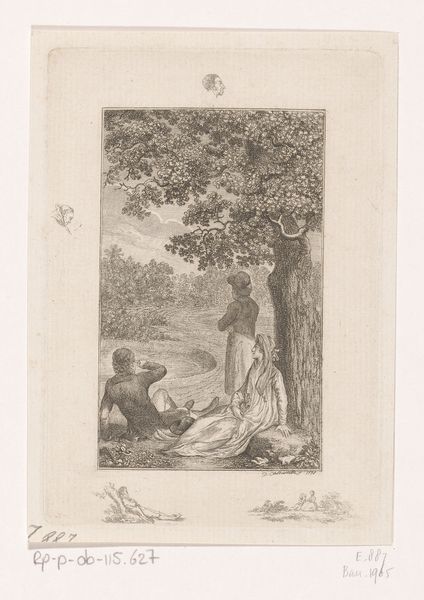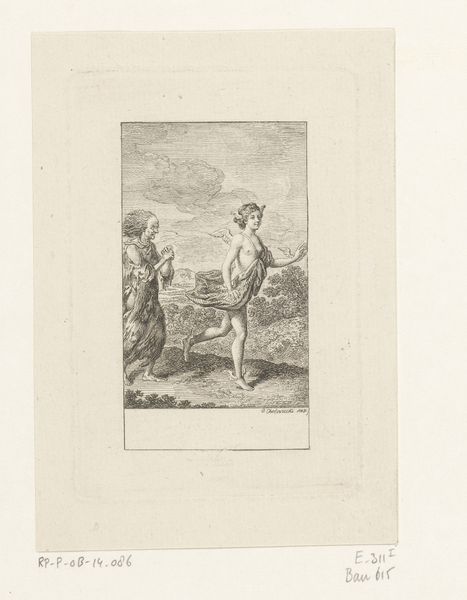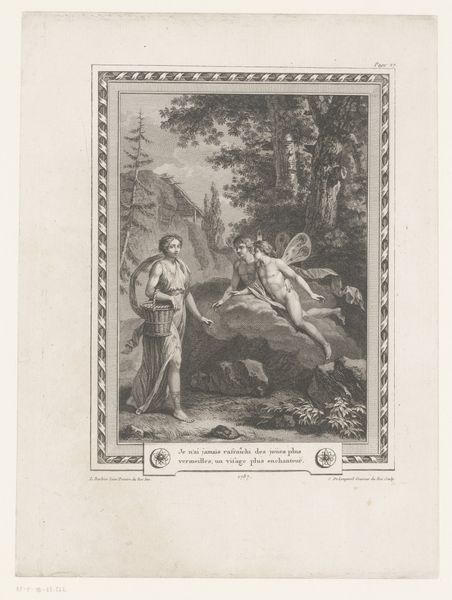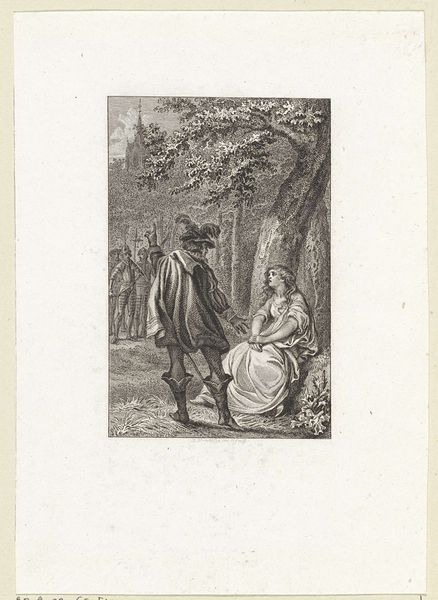
Nanna smeekt Hoder om niet tegen Balder te strijden 1784
0:00
0:00
Dimensions: height 165 mm, width 105 mm
Copyright: Rijks Museum: Open Domain
Editor: This is "Nanna beseeching Hoder not to fight Balder," a print etching on paper by Daniel Nikolaus Chodowiecki from 1784. It's a somber piece; the woman's desperation is palpable. What story do you think this piece tells? Curator: I see it as a commentary on the destructive nature of patriarchal power structures. Consider the narrative: Nanna, a woman, is pleading with Hoder, a man, presumably her husband, to avoid conflict. But the situation stems from a deeply embedded system where male aggression and honor are prioritized. Chodowiecki seems to position Nanna as the voice of reason against that toxic dynamic. Editor: So you see the setting and characters as metaphors? Curator: Precisely. It’s staged like a history painting, yet it resonates beyond the literal story. Think about the visual weight: the craggy landscape looming over them. It almost traps them in this cycle of violence, perpetuated through generations. Notice how Hoder is equipped with a spear? It's not merely a defense; it's a symbol of impending violence. Why do you think Chodowiecki chose such dramatic landscape? Editor: Perhaps to highlight the monumental scale of the conflict, how inescapable it feels? And I guess the artist wanted us to examine the personal impact of broader social forces? Curator: Exactly! We see individuals caught within forces they may not fully control, suggesting a deeper critique. Think of this piece not as a historical illustration but as a call for empathy and an indictment of needless conflict fueled by male pride and archaic power dynamics. Editor: This makes me think differently about narrative art and the artist's choices around the themes. Curator: It is a piece that highlights that intersection between art and social commentary and, therefore, an excellent teaching opportunity.
Comments
No comments
Be the first to comment and join the conversation on the ultimate creative platform.
